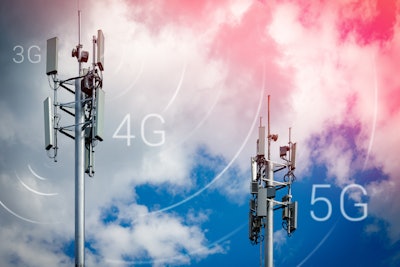
Just one year ago, at the height of the pandemic-driven supply chain crisis, cargo ships stalled offshore for up to 30 days at the Ports of Long Beach and Los Angeles. Now there is no queue, and retailers are scrambling to offload overstock due to poor forecasting and shifts in consumer taste.
Riding the vicissitudes of the global supply chain is never for the faint of heart. Players are in successive stages of innovating, improving and future-proofing their operations all the time. Investing in 5G offers businesses an opportunity to do just that: streamline and improve stock tracking and reliability while creating more secure data stores that help businesses immediately see potential problem areas.
5G offers better speed and security
While some might see 5G as just another unnecessary broadband upgrade, it is a fundamental advance for several industries, including logistics, operations and manufacturing.
At first, it was hard to see the potential for 5G technology. When 5G was first released, it was only available in a low-band spectrum, running at 600-700MHz, which was only marginally better than 4G networks. Better performance with 5G depended mainly on whether people conducted their business close to a cell site.
However, the mid-band spectrum, which runs between 1-6 GHz, changed all that, offering the same broad coverage but much faster. Mid-band also carries longer distances, enabling businesses to control logistics and 5G-controlled operations from afar—even on ships out at sea.
What is most appealing to businesses about the mid-band 5G spectrum is the opportunity for network slicing. Until recently, most companies had to rely on shared public networks to perform operations. Coverage on these networks was great but sharing them with other users in the vicinity often introduced latency and bandwidth issues, primarily when used for virtual reality (VR) or augmented reality (AR) projects that need robust broadband. Private networks were always an option, but they’re expensive and require more personnel to maintain, making them cost-prohibitive for many businesses.
Slicing allows companies to create their private networks on top of existing 5G infrastructure, combining the comprehensive coverage of public networks with the greater security and speed of private networks. These logical networks are incredibly flexible and secure and can be used for business purposes, such as logistics tracking, research and development.
Improving supply chain efficiency with 5G
The pandemic exposed the vulnerability of our existing supply chains, showing businesses that overhauling the supply chain is long overdue. But what, really, can 5G do to make this a reality?
Let’s start with visibility and how a lack of it can cause a ripple effect down the supply chain. For example, misplaced or lost inventory can delay shipments and create empty shop aisles. Not seeing a product on the shelf, shop owners and consumers might panic, causing a run-on ordering stock online. Companies, in turn, might have trouble keeping up with demand due to a lack of resources. Even worse, invisible malfunctions on a crane at the port, or a robot arm used during the manufacturing process, can cause significant production delays making it impossible to fulfill demand.
So how can 5G reduce visibility issues throughout the chain? Shippers can use the lower latency and faster data throughput of 5G and cheap sensors to improve single-item tagging, allowing shippers and warehouses to follow inventory in 3D space and in real time. The enhanced information flow will enable them to see where stock is worldwide and update inventory status in real-time. In turn, this improves product traceability, and offers valuable data at every step of the supply chain journey, helping companies identify bottlenecks and improve processes to tackle those issues. Tracking also prevents delays and adjusts expectations when stock goes missing, such as when a container gets lost in the stack at port or when a ship is delayed due to adverse weather conditions.
For logistics and enterprise companies, the faster technology offered by 5G is a game changer. 5G has extremely low latency, just under 5 milliseconds compared to the 4G average of 50 milliseconds. This increase dramatically impacts how far away you can control 5G-connected devices and how many devices you can connect to a network before lag becomes an issue. While some companies consider moving supply chains closer to home or working with strategic partners to control parts of their supply chain that are too far away for oversight, 5G allows companies to control from afar, giving them the best oversight possible: their own.
Research and development of the supply chain
5G also has applications in product development. While 4G networks are too laggy for real-time simulations, companies can use 5G across large production spaces, such as airline hangars and warehouses. Technicians can use VR and AR tech without lag while working collaboratively with other teams worldwide using HD video calls on secure, high bandwidth 5G MPR networks. When demand is high in different project areas, technicians can adjust 5G upload/download bandwidth to accommodate fluctuations on their sliced network.
Future-proofing against an unknown future
5G is already widely available, and smaller companies with fewer moving parts and a hunger to innovate are already using 5G to improve their processes. Big companies also see the necessity for change and have begun implementing 5G where possible. Mid-size businesses are the ones that need to move now to ensure they’re not lagging.
Is preparing your business for 5G expensive? Sure, but not in terms of ROI. A competitive advantage awaits those who are ready to make an early investment. If the shakeup to the supply chain during the pandemic has proved anything, we need to rethink how we support all aspects of the supply chain. Do it today or be left behind.



















